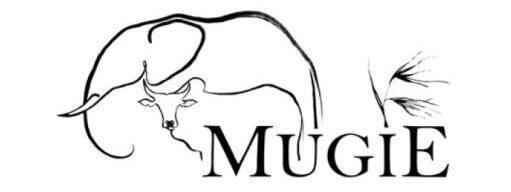FAQs
Mugie Conservancy is a privately owned wildlife conservancy in Laikipia, Kenya, covering over 49,000 acres. It plays a crucial role in wildlife conservation, sustainable agriculture, and community development, protecting endangered species and promoting eco-tourism.
Mugie Conservancy is located in Laikipia, Kenya. The GPS coordinates for Mugie HQ gate are 0.710152°, 36.593521°
Mugie is a vibrant sanctuary teeming with life! Here, over 60 species of mammals roam freely, alongside 350 bird species and more than 500 plant varieties, including several rare and endangered species.
Mugie Conservancy supports the local community by providing healthcare, education, and job training. The conservancy also promotes sustainable farming practices, helps local farmers, and partners with organizations like The Moyo Foundation to improve community well-being.
Yes, the money from your stay also supports community initiatives, including education, healthcare, and employment for local residents. Mugie actively works to uplift the community through various social programs, ensuring the benefits of eco-tourism reach the surrounding areas.
Yes, visitors can engage in conservation activities such as tree planting, accompanying rangers on wildlife patrols, and learning about anti-poaching initiatives. These immersive experiences provide a deeper understanding of Mugie’s conservation work and allow visitors to actively contribute.
The K9 unit, consisting of 3 trained dogs and handlers, plays a crucial role in tracking poachers, solving wildlife crime incidents, and addressing petty crimes in nearby villages, enhancing the overall security within the conservancy.
Mugie Conservancy plays a vital role in conserving endangered and vulnerable species, such as Grevy’s zebra, reticulated giraffe, and cheetahs. The conservancy focuses on protecting habitats, conducting research, and running anti-poaching initiatives.
We offer unique experiences such as guided wildlife safaris, bird watching, participating in conservation activities, and cultural interactions with local communities. Sporting enthusiasts can enjoy a round of golf on our 9-hole Mugie Golf Course, one of Kenya’s northern-most golf courses. Visitors can also enjoy the stunning landscapes, including the 156-acre Mugie Dam, which attracts diverse birdlife and wildlife. Here, guests have the rare opportunity to kayak alongside elephants, an unforgettable experience. Ekorian’s Mugie Camp was the first destination in Kenya to be awarded the Magical Kenya Signature Experience by the Kenya Tourist Board for its exceptional kayaking experience.
We’re approximately 4-5 hours by road from Nairobi, depending on traffic and road conditions. Alternatively, it is a 45-minute chartered flight from Wilson Airport in Nairobi to the Mugie airstrip.
We offer several accommodation options, including:
- Governors’ Mugie House, a luxurious safari lodge.
- Ekorian’s Mugie Camp, an eco-friendly tented camp.
- Ol Keju Camp, a rustic option for camping enthusiasts.
Yes, Mugie Conservancy is deeply committed to local communities. It runs programs in healthcare, education, and sustainable agriculture, partnering with organizations like The Moyo Foundation to deliver health and wellness programs in schools and surrounding villages.
Yes, a portion of the revenue from your stay supports Mugie’s conservation programs, including anti-poaching patrols, habitat restoration, and endangered species protection. Your visit directly contributes to preserving the wildlife and landscape of the conservancy
Yes, Mugie Conservancy actively engages in wildlife research and monitoring, such as tracking species populations, understanding predator-prey dynamics, and contributing to habitat restoration projects. It also supports efforts to conserve endangered species.
Mugie Conservancy mitigates human-wildlife conflict by involving local communities in conservation, providing alternative water sources for wildlife, and constructing electric fences to protect both wildlife and community farms, promoting coexistence.
Mugie Conservancy balances wildlife conservation with sustainable agriculture. It operates cattle ranching under strict environmental management practices, ensuring that livestock farming and wildlife can coexist harmoniously.

